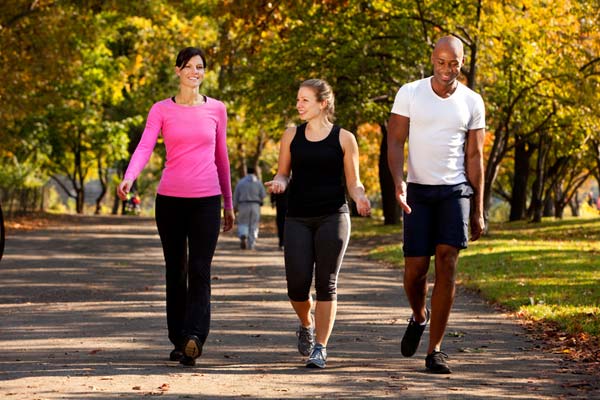Which US States Meet Exercise Guidelines?

The U.S. state with the highest percentage of people meeting exercise guidelines is Colorado, according to a new report.
Researchers found that 27.3 percent of Coloradans met the recommendation, trailed by Washington, D.C., with 26.3 percent and Alaska with 25 percent, according to the report from the Centers for Disease Control and Prevention.
Guidelines from the CDC recommend that adults do at least 2.5 hours of moderate-intensity aerobic activity weekly (or an hour and fifteen minutes of vigorous activity), and also do muscle-strengthening activities, such as push-ups or weight lifting, at least two days a week.
The percentage of adults who met both those recommendations nationally was 20.6 percent, according to the report. But more people met the aerobic activity guidelines (51.6 percent) than the muscle-strengthening guidelines (29.3 percent).
The states with the lowest percentages of adults meeting the goals were West Virginia and Tennessee (both with 12.7 percent), and Mississippi (14.2 percent). [See full list of states]
The report is the first that has shown the number of U.S adults who meet both the aerobic and muscle-strengthening guidelines by state, said researcher Carmen Harris, an epidemiologist at the CDC. The new data will provide a baseline for future research, she said.
The national results are "encouraging,” Harris said. "This is a great foundation to build upon, but there is still much work to do," she said.
Get the world’s most fascinating discoveries delivered straight to your inbox.
"We don’t really know why some states have a higher percentage of adults meeting both the aerobic and muscle-strengthening activity guidelines," Harris said. Its possible that demographic differences among the states play a role.
Researchers know that sidewalks and walking trials may increase access to opportunities for physical activity in states and communities, she said.
Researchers found that 23.4 percent of men met the guidelines, while 17.9 percent of women did.
The report is based on data gathered during a 2011 national telephone survey of more than 450,000 U.S. adults. The researchers noted that people were asked to report their own activity levels, and their answers may not be completely accurate.
The researchers also noted that the questions in the survey asked people to report physical activity done outside of their job duties, so for people with physically demanding jobs, their answers to the surveys might understate their true level of physical activity.
Follow Karen Rowan @karenjrowan. Follow MyHealthNewsDaily @MyHealth_MHND, Facebook & Google+. Originally published on MyHealthNewsDaily.



